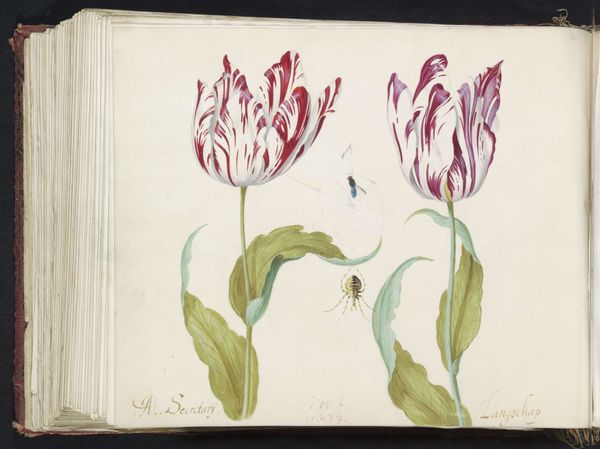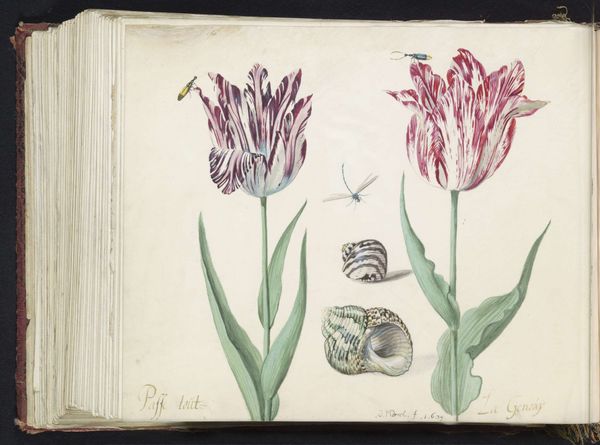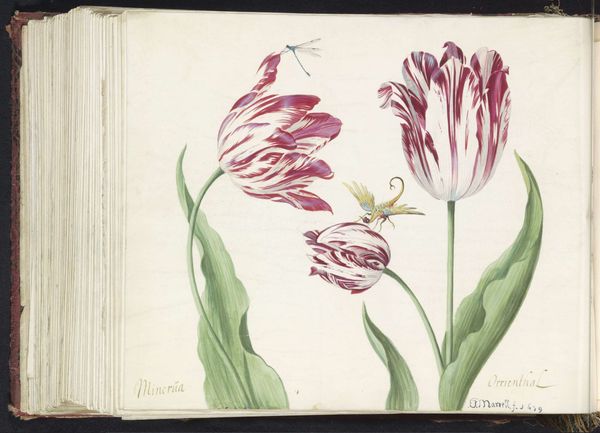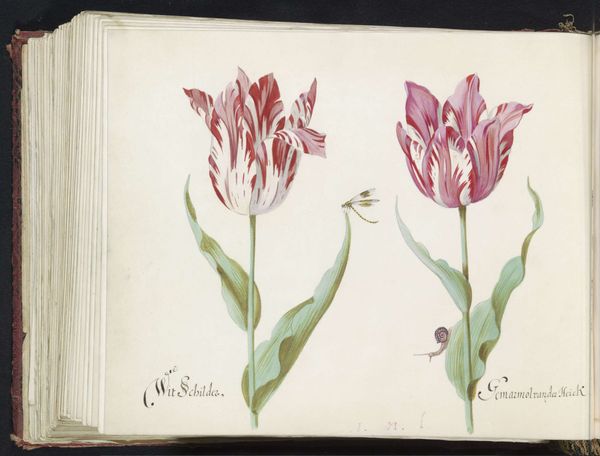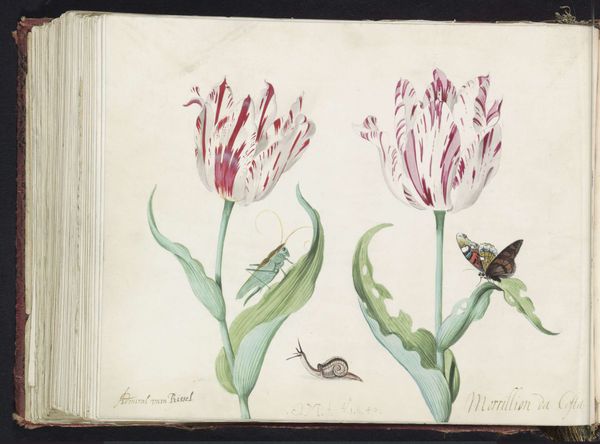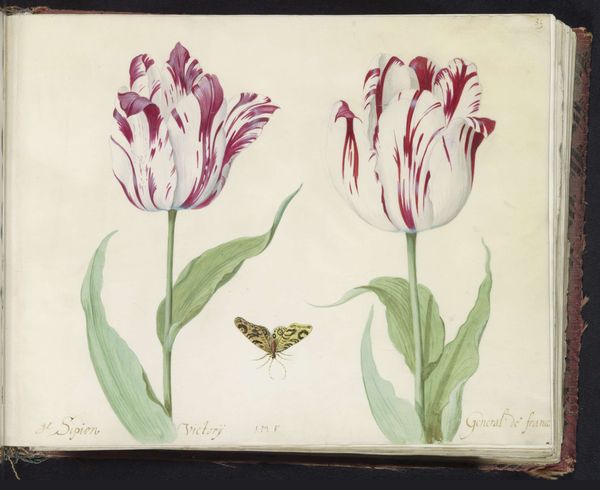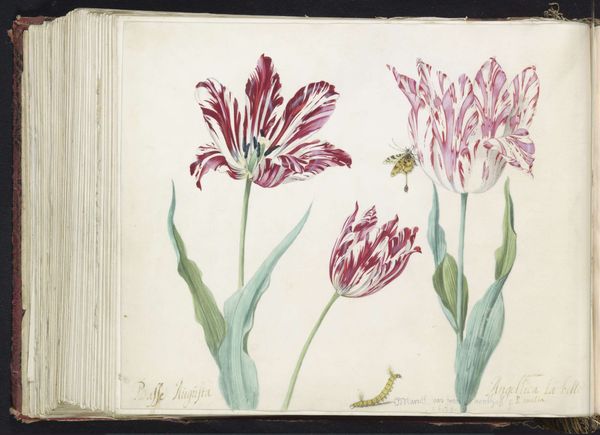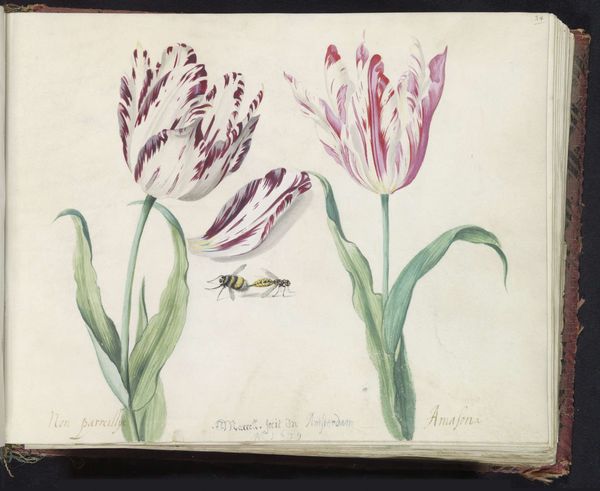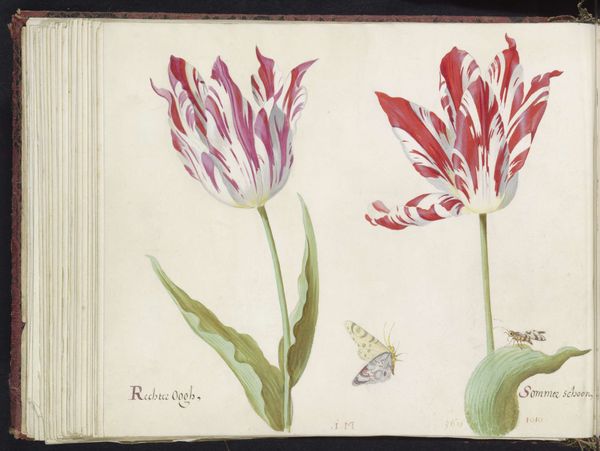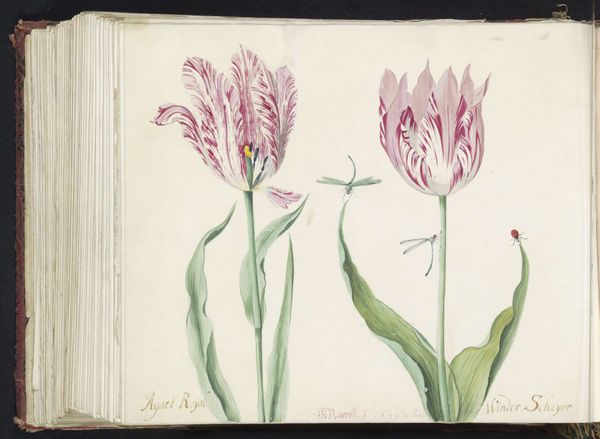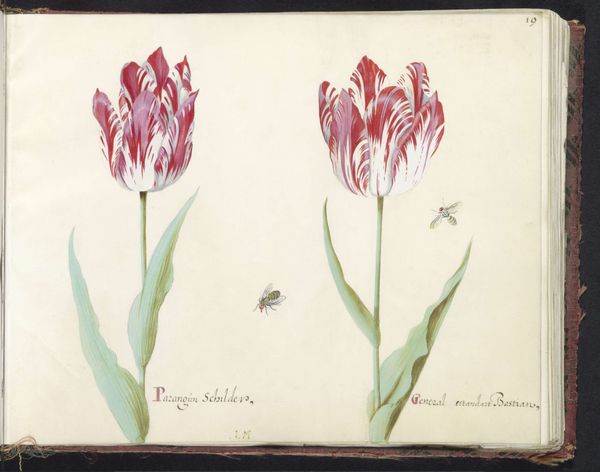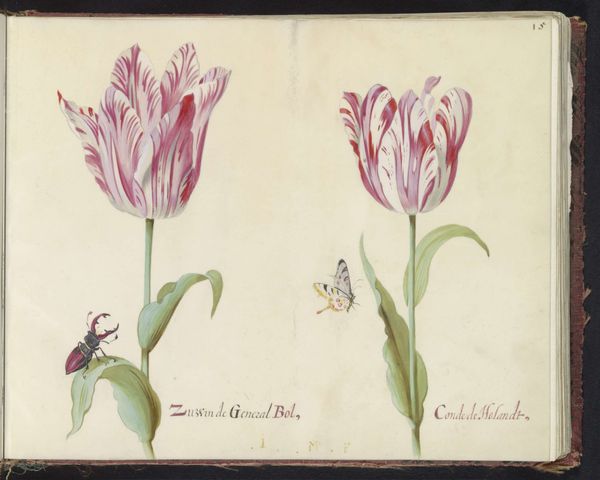
painting, watercolor
#
dutch-golden-age
#
painting
#
watercolor
#
coloured pencil
#
watercolour illustration
#
watercolor
Dimensions: height 265 mm, width 335 mm
Copyright: Rijks Museum: Open Domain
Curator: The artwork before us, made with watercolor, is titled "Two Tulips with Shell, Beetle, Fly, and Butterfly". Jacob Marrel completed it around 1639. Editor: It has the serene precision of scientific illustration, yet that snail on the left exudes a certain whimsical charm. Curator: The piece is deeply embedded in the visual culture of the Dutch Golden Age, a period fascinated with the natural world, often displayed through meticulously rendered details. Editor: The artist seems fascinated by the textures and details. Note how the striped tulips are echoed in the spiral of the seashell; the meticulous pattern emphasizes structure in a simple still-life arrangement. Curator: Indeed, flower painting wasn't just about aesthetics; it reflected the booming tulip market and the almost feverish societal fascination with rare varieties like the Semper Augustus, similar to the tulips depicted. Editor: I am struck by the color scheme, or how muted the colors are. Even though we know the tulips were exotic in their time, their hues are very soft and organic now. It is subtle. Curator: Notice, too, how the arrangement almost creates a little narrative—the insect life, the still presence of the shell. It's more than a record. Editor: How might Marrel have conceptualized this layout and composition? Perhaps as an allegorical reminder of nature's beauty but also of mortality? A passing fly, and tulips soon to wither. Curator: Exactly. Still-life, even botanical studies such as this, frequently served as vanitas symbols. But the accuracy and scientific consideration given to it points toward a developing interest in botany as a serious field of study. Editor: What I gather here is that Marrel creates not merely a beautiful representation, but he places those in tension with symbolic and philosophical undertones. A moment that encapsulates a much wider socio-political scene. Curator: I concur. Seeing the work from that standpoint gives us new insights and interpretations. Editor: Looking closely like this, the artwork's complex layers really stand out in new, thoughtful ways.
Comments
No comments
Be the first to comment and join the conversation on the ultimate creative platform.
